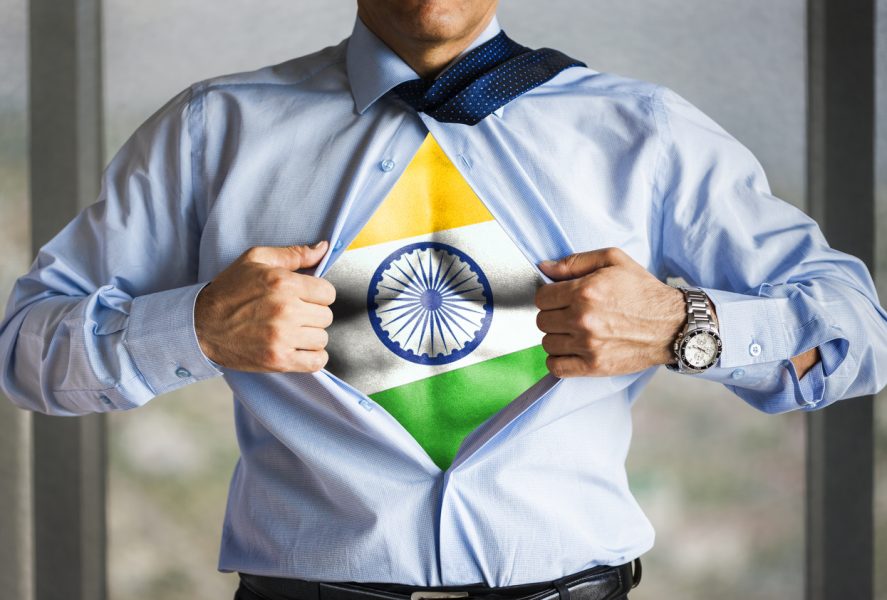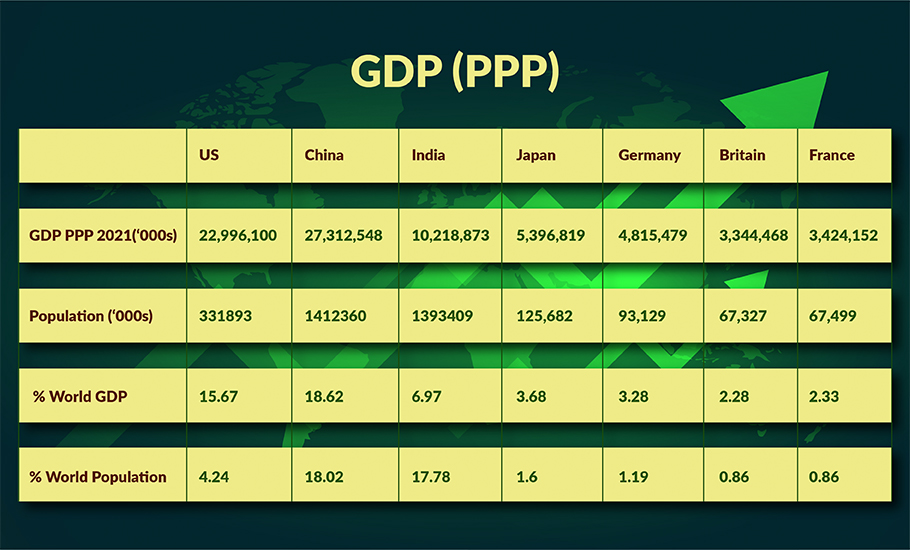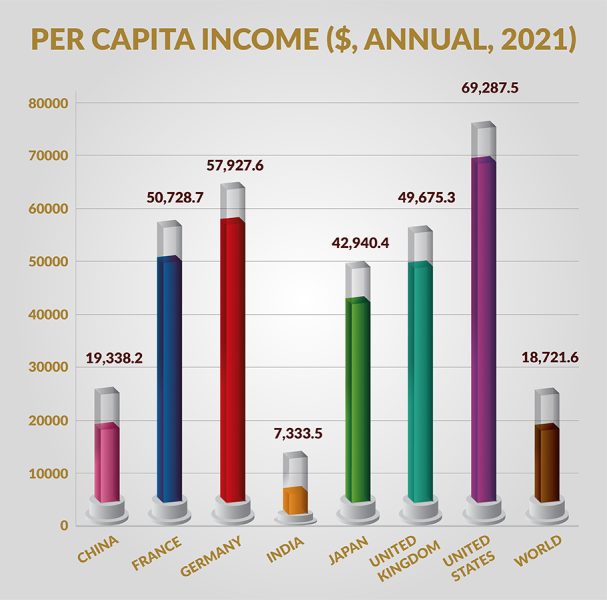
Overtaking UK economy: Been there, done that, nothing to cheer about
India’s per capita GDP is less than half the average for the world; even if we do not take into account other figures, such as for malnutrition and hunger, India has a long way to go before we can take comfort in economic statistics

Researchers recently discovered that dogs experience tears of joy when they see their human loved ones after a period of separation. What brings tears of joy to many people in India these days is a news headline that says India overtakes Britain as the fifth largest economy, or that the world’s third richest man is an Indian. The dog’s tears are a whole lot more virtuous and wholesome than the latter kind, for three different kinds of reasons.
A country’s economic size matters because it is a proxy for how well off its people are, and how much it is able to use its economic heft to make its views count in the comity of nations. From this perspective, the recent news of India overtaking Britain in economic size does not merit a great deal of tail-wagging excitement.
The recent newsmaking economic feat on India’s part took place in market exchange rates. But in terms of what economists call purchasing power parity (PPP) exchange rates, India overtook Britain in 1991. In fact, India overtook Japan to become the world’s third largest economy in 2008.
How the economic size of a country relates to the welfare of its citizens lends itself to comparison across countries when the size of the economy is measured in PPP terms.
A haircut can cost a man something like $30 in a town in the US, other than places like New York and Los Angeles, where the cost would be much higher. At market exchange rates, that would mean something of the order of ₹2,400 per haircut. But, in India, a visit to a barber would put a man back by ₹100 or ₹150 in a town, and less in other places. It is similar for most services. However, certain goods could actually be cheaper in the US than its counterpart price converted at market exchange rates in India.
If someone earns ₹80,000 in India, it would convert to something like $1,000. But with ₹80,000 in India, one would be able to purchase a great deal more in India than what someone in the US would be able to purchase with $1,000 in the US.
Also read: Gorbachev: The man who ended the Soviet lie and liberated nations
To make the comparison possible, you need an exchange rate different from the market exchange rate, one that equates the price in rupees of a basket of goods and services with the price in dollars of the same set of goods and services in the US. The exchange rate you derive from this is called the purchasing power parity exchange rate.
The Economist magazine has a fun way of estimating the PPP exchange rate. It looks at the price of a MacDonald’s burger in different countries, and equates them, the burger acting as the uniform basket of goods and services (bun, meat, vegetables, cheese, seasoning, rent for the premises, wages of chefs, servers, etc).
Suppose the burger costs Rs 200 in India and $4.50 in the US (India does not have a beef burger unlike MacDonald’s elsewhere, so this is a made-up number for illustrative purposes). This implies a PPP exchange rate of Rs 44.44 per dollar. But the market exchange rate is about Rs 80 per dollar. The market exchange rate undervalues the rupee by some 44% — [1 – 44.44/80]x100.

China is the world’s biggest economy in PPP dollars, bigger than the US. However, in terms of per capita income, the second reason why excessive exuberance is not warranted by India overtaking Britain in terms of economic size, the US is far ahead of China and of the other major economies as well.
India’s per capita GDP, even measured in the more flattering PPP dollars, is less than half the average for the world. Even if we do not take into account other figures, such as for malnutrition and hunger, India has a long way to go before we can take comfort in economic statistics.

GDP figures, aggregate or per capita, do not, however, fully capture the economic power of a country. That is the third reason not to get too excited about GDP numbers.
Geopolitical influence
The US can impose sanctions on countries, cutting off nations and companies from dollar networks or denying companies and countries key technology or components that embody technology. Iran and Russia face dollar sanctions, China has been denied Nvidia chips, which are used for massive parallel processing of the sort that goes into artificial intelligence.
Also read: A peek at India in 2047: Wishful thinking, but it’s the season of hope
Or take Russia. It is much smaller than India, estimated in either market exchange rates or PPP exchange rates. But it has geopolitical significance that India still lacks, thanks to its legacy as the successor state to the Soviet Union and its nuclear arsenal and investment in new kinds of weapons such as hypersonic missiles.
But economic heft in market exchange rates has its uses. When India wants to buy traded goods from abroad, it is the ability to muster resources, measured in market exchange rates, that counts.
The news of India overtaking Britain in market exchange rates, decades after overtaking the former colonial power in terms of PPP dollars, offers an indication of steady progress, which needs to be consolidated and built upon. That is a source of satisfaction, not wild cheer.
(The author is a senior journalist based in Delhi)
(The Federal seeks to present views and opinions from all sides of the spectrum. The information, ideas or opinions in the articles are of the author and do not necessarily reflect the views of The Federal)


